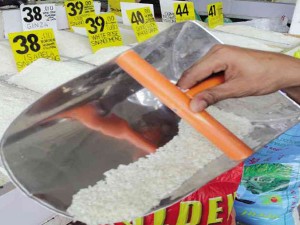In the know: All about rice
Rice varieties are classified based on the size of grains (long, medium and short) and on agro-ecological zones where they are grown (lowland irrigated, lowland rainfed, saline prone, cool elevated, and upland, among others).
They are called either traditional, modern (also called high-yielding) or hybrid.
The traditional and modern varieties are “inbred” rice, reproduced through self-pollination (inbreeding) and their seeds used for planting.
The traditional varieties are tall, lodge easily, photoperiodic (need specific amount of sunlight) and take five to to six months to mature. Modern varieties are semidwarf, nonphotoperiodic and mature in four months or less.
Hybrid rice varieties, on the other hand, are products of crossing two genetically different parents with superior qualities. These qualities are passed on to the seeds and result in “heterosis” or hybrid vigor. New seeds developed from parent-plants (called “Mr. and Mrs.” by hybrid rice seed farmers), however, are needed for planting.
Some of the traditional varieties that have become popular in the local market were Raminad, Elon-elon, Wagwag, Milagrosa, Peta, Kinandang Pula, Macan, Azucena, Apostol, Pinursige, Initintiw and Dinorado.
The modern rice varieties include Tubigan 1, Mabango, Angelica, Submarino 1, Matatag, Salinas, Sahod-ulan and Malagkit, among others. These carry the identification “NSIC Rc (number),” which indicates their release by the National Seed and Industry Council, formerly Philippine Seed Board, which approves and registers crop varieties.
Forty-four hybrid rice varieties have been released in the market. The earliest were Magat, Panay and Mestiso, while the more recent carry the name “Mestiso” followed by a number.
There are also called “heirloom rice plants” grown in the Cordillerra region. Some of these are Mina-angan, Hungduan, Ulikan, Jekot, Dikit, Tinawon, Unoy and Kintoman.
Some of the popular traditional rice varieties in Mindanao are Domodaw, Speaker, Cabuyoc, Azucena, Perya, Magpongpong, Libo-Libo, Ilaynon, Pinili, Mamintana, Sinamao, Dinorado and Katibon White.
Companies and rice breeders, including farmers who produce their own rice variety through selection and repeated planting, give particular names to their varieties.
Government agencies estimate that the Philippines has 10,000-15,000 rice varieties. Anselmo Roque















